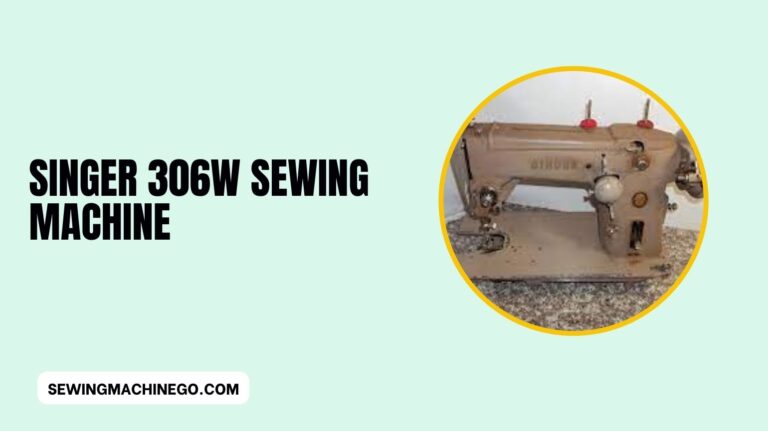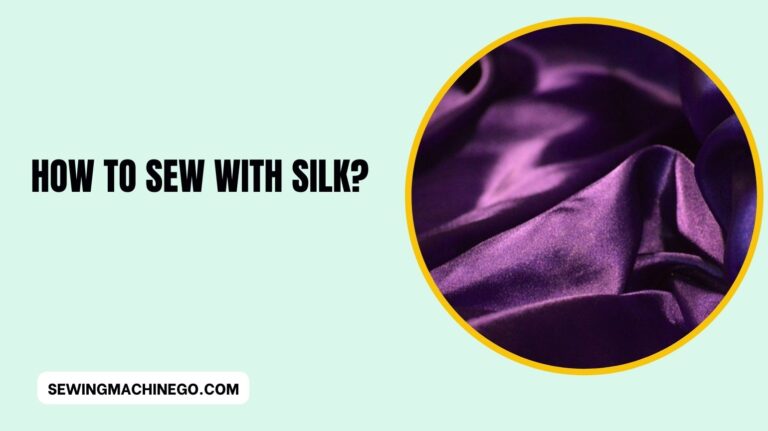How to Sew Seams by Hand? (Ultimate Guide) In 2023
In the realm of crafting, the art of hand-sewing seams holds a timeless appeal. How to Sew Seams by Hand? It’s not just about stitching fabrics together; it’s about creating something unique, personalized, and crafted with care.
In this comprehensive guide, we’ll unravel the secrets of hand-sewing, exploring techniques, troubleshooting tips, and even diving into the creative possibilities that hand-sewn seams offer.

Tools and Materials
Before diving into the delicate dance of stitching, it’s essential to gather the right tools and materials.
A sturdy needle, high-quality thread, and appropriately cut fabric pieces are the building blocks of successful hand-sewn seams. Consider investing in a good pair of fabric scissors and reliable pins to ensure precision in your craft.
Choosing the Right Thread
The thread may seem like a mundane detail, but choosing the right one can make a significant difference in the outcome of your hand-sewn seams.
Factors like the type of fabric intended use, and desired aesthetic play a role in selecting the perfect thread. Whether it’s a sturdy cotton thread for durability or a delicate silk thread for a luxurious finish, the choice is yours.
Preparing Fabric for Seams
Properly preparing your fabric is the foundation of a successful hand-sewn project. Take the time to cut your fabric pieces accurately, ensuring they match your pattern or design.
Pinning and aligning the fabric sections before sewing helps maintain symmetry and prevents unexpected shifts during the stitching process.
Basic Hand-Sewing Techniques
Here are the Basic Hand-Sewing Techniques:
Running Stitch: A Step-by-Step Guide
The running stitch is the simplest and most versatile of hand-sewing techniques. It involves creating a continuous line of small, evenly-spaced stitches.
This fundamental stitch is perfect for various projects, from basic repairs to creating entirely hand-sewn garments.
Backstitch: Enhancing Seam Durability
When durability is a priority, the backstitch comes to the rescue. This stitch involves doubling back on the previous stitch, creating a secure and robust seam.
Ideal for items that will endure frequent use or tension, the backstitch is a valuable addition to your hand-sewing repertoire.
Overcast Stitch: Ideal for Preventing Fraying
Preventing fraying is crucial for the longevity of your hand-sewn creations. The overcast stitch encases the raw edges of the fabric, offering a neat and tidy finish while fortifying the seam against wear and tear.
Creating Different Seams
Here are the Step by Step Guide of Creating Different Seams:
Flat-Fell Seam: Suitable for Heavy Fabrics
The flat-fell seam is a heavyweight champion, ideal for fabrics that need extra reinforcement.
Commonly used in denim or canvas projects, this seam involves folding one fabric edge over the other and securing it with a series of sturdy stitches.
French Seam: Concealing Raw Edges Elegantly
For a touch of sophistication, the French seam is a go-to choice. This technique conceals raw edges within the seam, resulting in a clean and polished finish. While it requires a bit more finesse, the elegant appearance is well worth the effort.
Troubleshooting Common Issues
Hand-sewing, while a delightful and rewarding craft, is not without its challenges. As you embark on your journey of stitching by hand, it’s essential to be prepared for common hiccups that may arise.
Here, we’ll explore practical solutions to troubleshoot these issues, ensuring your hand-sewn projects are a seamless success.
Uneven Seams
Problem: Uneven seams can be frustrating and affect the overall appearance of your hand-sewn project.
Solution: Ensure fabric pieces are properly aligned before sewing. Use pins to secure layers and maintain even tension on both sides as you stitch. Practice consistency in stitch length for a smoother, more uniform finish.
Thread Tangles and Knots
Problem: Unexpected tangles and knots can disrupt the flow of your hand-sewing process.
Solution: Keep an eye on your thread tension. If you notice it becoming too tight, release some thread from the spool. If a knot forms, gently undo it and continue sewing. Regularly check your thread for any signs of wear or weakness to prevent future issues.
Puckering Fabric
Problem: Puckering occurs when fabric gathers around the stitches, distorting the seam line.
Solution: Experiment with different stitch lengths and thread tensions on a scrap fabric. Ensure you’re not pulling the fabric too tightly as you sew. If puckering persists, consider using a stabilizer or interfacing to reinforce the fabric.
Needle Breakage
Problem: The frustration of a broken needle can bring your hand-sewing to a sudden halt.
Solution: Use the appropriate needle size for your fabric, and avoid excessive force when sewing through thick layers. If a needle does break, replace it promptly, and inspect your sewing machine for any potential issues that may be causing undue stress on the needle.
Misaligned Patterns
Problem: Patterns that don’t align correctly can compromise the overall look of your hand-sewn project.
Solution: Take extra care during the cutting phase to align pattern pieces accurately. Mark key points on your fabric for reference, and use pins or basting stitches to secure the alignment before permanently stitching the seam.
Decorative Hand-Sewn Seams
Elevate your hand-sewn creations from functional to fabulous by exploring decorative stitching techniques.
From intricate embroidery to adding beads or sequins, the possibilities are endless. Unleash your creativity and turn your hand-sewn items into works of art.
Project Ideas
Simple Hand-Sewn Projects for Beginners
Embarking on your hand-sewing journey? Start with simple projects that build your confidence and hone your skills. A basic hand-sewn tote bag or a set of custom-designed napkins are perfect starting points for beginners.
Advanced Hand-Sewn Projects for Seasoned Crafters
For those well-versed in the art of hand-sewing, challenge yourself with more intricate projects. Consider crafting a hand-sewn dress, tailored to your measurements, or delve into the world of heirloom quilting. The satisfaction of creating something truly unique awaits.
Benefits of Hand-Sewn Seams
The allure of hand-sewn seams extends beyond the tangible results. Personalization and customization are at the forefront, allowing crafters to infuse their creations with a touch of individuality.
The enhanced control and attention to detail achievable through hand-sewing contribute to a sense of pride in the finished product.
Tips for Efficient Hand-Sewing
Mastering the art of hand-sewing involves more than just skillful stitching. Maintain a comfortable posture while sewing to prevent strain on your back and neck.
Adequate lighting and magnification tools can significantly enhance visibility, ensuring your stitches are precise and flawless.
Caring for Hand-Sewn Items
The longevity of hand-sewn items depends on proper care. Learn the best practices for washing and preserving your creations, and discover techniques for repairing any wear and tear that may occur over time.
With the right care, your hand-sewn pieces can withstand the test of time.
Connecting with the Sewing Community
Sewing is not just a solitary pursuit; it’s a community-driven passion. Explore online forums and communities dedicated to sewing, where you can share your projects, seek advice, and connect with fellow enthusiasts.
Consider participating in sewing events and workshops to further enrich your hand-sewing experience.
Future Trends in Hand-Sewing
As the world of crafting evolves, so do hand-sewing techniques. Explore modern twists on traditional methods and embrace sustainable and eco-friendly practices.
The future of hand-sewing holds exciting possibilities for innovative projects and environmentally conscious crafting.
People also ask
How do you sew a perfect seam by hand?
To sew a perfect seam by hand:
Even Stitches: Ensure stitches are of equal length for a consistent look.
Straight Alignment: Keep the fabric edges aligned, maintaining a straight seam.
Tension Control: Maintain consistent tension on the thread for even stitches.
Backstitching: Use backstitch for durability; insert the needle into the previous stitch before moving forward.
Practice: Regular practice improves control and precision in hand-sewing.
Pressing: Press the seam after sewing for a polished finish.
What is the strongest hand stitch for seams?
The backstitch is considered one of the strongest hand stitches for seams. It involves overlapping stitches, providing durability and preventing the seam from easily unraveling.
How do you sew an invisible seam by hand?
To sew an invisible seam by hand, use the slip stitch. Align the fabric edges, and insert the needle through one layer and then the other, creating small, nearly invisible stitches.
Keep the stitches close together for a seamless finish.
How do you sew perfect seams?
To sew perfect seams:
Accuracy: Ensure precise measuring and cutting of fabric.
Pin or Baste: Secure fabric layers with pins or basting stitches before sewing.
Straight Stitching: Keep stitches straight and of even length.
Backstitch for Strength: Use a backstitch for stronger seams.
Pressing: Press seams open or to the side for a professional look.
Practice: Regular practice improves sewing accuracy and skill.
Conclusion – How to Sew Seams by Hand?
In this journey through the art of hand-sewing seams, we’ve unraveled the threads of technique, creativity, and community.
Whether you’re a novice seeking the joy of crafting or a seasoned crafter looking for new inspiration, the world of hand-sewing welcomes you.
Embrace the elegance of stitching by hand, and let your creativity flow, one seam at a time.

Hi, I am Alice, and I am your perfect guide to the world of sewing machines. With over 10 years of experience in the sewing industry, I am passionate about sharing my knowledge and expertise to help you make the most of your sewing journey. about me






